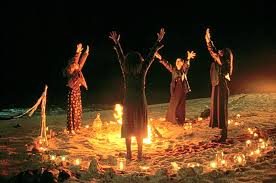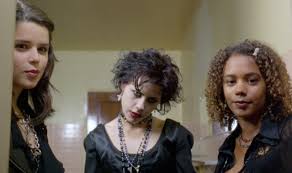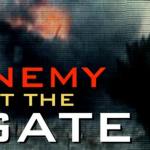The Craft (1996)

The Craft is a 1996 supernatural horror film directed by Andrew Fleming that has since become a cult classic, particularly among fans of the genre. Combining elements of teen drama and horror, the film explores themes of friendship, empowerment, and the darker aspects of teenage angst through the lens of witchcraft. With its memorable performances and a compelling story, The Craft resonates with audiences, particularly young women, who see their struggles reflected in the characters.
The film follows a group of teenage girls at a Catholic high school who become friends due to their shared interest in the occult. The central character, Sarah Bailey (played by Robin Tunney), moves to Los Angeles and quickly finds herself drawn to a trio of outcasts: Nancy (Fairuza Balk), Bonnie (Nev Campbell), and Rochelle (Rachel True). Each girl possesses their own issues and insecurities, and they turn to witchcraft as a means of empowerment and self-expression.

As the group begins to practice magic, they experience a surge of power that transforms their lives. However, as they delve deeper into the dark arts, the consequences of their actions lead to unforeseen and often dangerous outcomes. The film explores the consequences of wielding power irresponsibly, highlighting the thin line between empowerment and destruction.
Fairuza Balk’s performance as Nancy stands out, as she embodies the character’s intensity and volatility. Nancy’s transformation from a troubled girl to a power-hungry witch is both captivating and chilling, making her one of the film’s most memorable characters. The dynamic among the four leads is authentic and relatable, showcasing the complexities of teenage friendships, loyalty, and betrayal.

The cinematography by Peter Deming contributes significantly to the film’s atmosphere. The visual style combines a gritty realism with moments of surrealism, particularly during the magical sequences. The use of color and lighting enhances the emotional weight of the narrative, creating a sense of foreboding that mirrors the girls’ descent into darkness.
The film’s soundtrack is another highlight, featuring a mix of 90s alternative rock and gothic music that captures the era’s aesthetic. Songs by artists like Hole and Bush complement the film’s themes and emotional beats, enhancing the overall experience. The music serves as a powerful backdrop to the characters’ journeys, amplifying their struggles and triumphs.

The Craft also addresses important themes such as female empowerment, the search for identity, and the consequences of social exclusion. As the girls navigate their insecurities and desires, the film raises questions about the nature of power and its effects on relationships. The depiction of female friendship—both supportive and ultimately destructive—adds depth to the narrative, making it resonate with viewers who have experienced similar dynamics in their own lives.
Upon its release, The Craft received mixed reviews from critics, but it quickly gained a dedicated fanbase. Its portrayal of teenage girls exploring their identity through witchcraft struck a chord with audiences, particularly young women who appreciated the film’s blend of horror and empowerment. Over the years, it has been celebrated for its representation of female friendships and its exploration of themes relevant to adolescence.
In conclusion, The Craft is a compelling and atmospheric film that combines horror and drama to tell a story about empowerment, identity, and the complexities of teenage relationships. With strong performances, a distinctive visual style, and a memorable soundtrack, the film has secured its place as a cult classic in the horror genre. Its themes of friendship, power, and the consequences of choice continue to resonate with audiences, making The Craft a timeless exploration of the struggles and triumphs of youth. Whether revisiting it or discovering it for the first time, the film remains an impactful and engaging experience.











